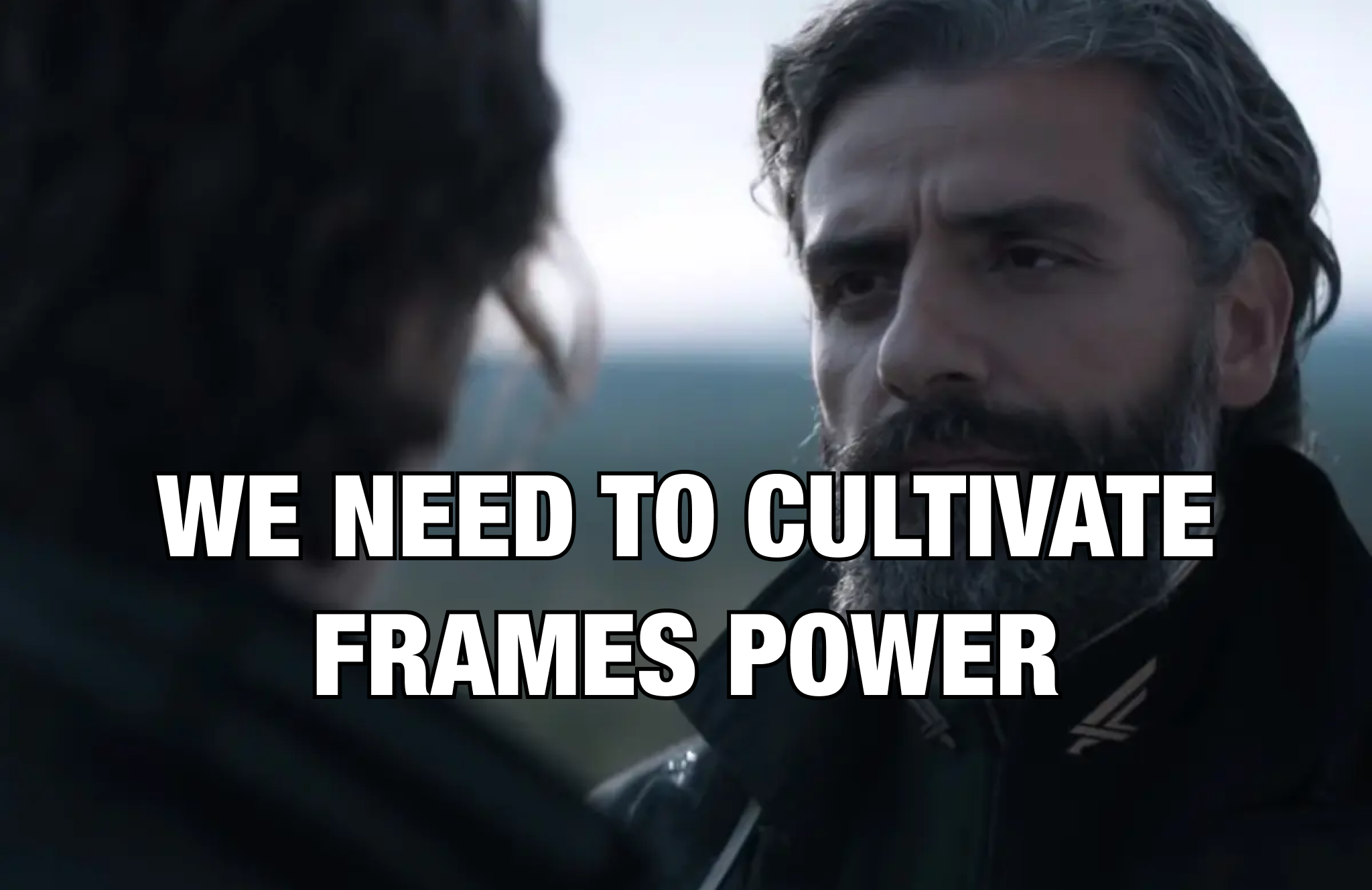
Framing Frames
Six Mental Models to Help You Think about Farcaster Frames
Frames are the most exciting thing since NFTs. They transform any web page into tiny apps that know who you are, enable one-click, anxiety-free global commerce, and can be as viral and fleeting as a tweet. Here are a handful of ways to think about what frames are, how to leverage them, and where they're going.
Open Graph protocol, initially developed by Facebook, is a protocol that enables any web page to become a rich object in a social feed. It's the thing that makes links display as lovely clickable images on iMessage, X, Facebook, Slack, and other apps.
Here's an example of OG tags from The Open Graph protocol's website:
<html prefix="og: <https://ogp.me/ns#>">
<head>
<title>The Rock (1996)</title>
<meta property="og:title" content="The Rock" />
<meta property="og:type" content="video.movie" />
<meta property="og:url" content="<https://www.imdb.com/title/tt0117500/>" />
<meta property="og:image" content="<https://ia.media-imdb.com/images/rock.jpg>" />
...
</head>Frames are Open Graph+ (OG+) because they extend the Open Graph spec and enable any web page to become an interactive app in a social feed. Open Graph protocol is used in over 13M websites. OG+ is a powerful mental model; should Frames approach the adoption of Open Graph, it will revolutionize how we interact with web apps and accelerate crypto adoption.
“Frames: [OG+] simple, very limited on UI/UX, will be extended w JSON” - David Furlong (DF). founder of Open Frames
<meta property="fc:frame" content="vNext" />
<meta property="fc:frame:image" content="http://...image-question.png" />
<meta property="fc:frame:button:1" content="Green" />
<meta property="fc:frame:button:2" content="Purple" />
<meta property="fc:frame:button:3" content="Red" />
<meta property="fc:frame:button:4" content="Blue" />Billboarding is when a user's use of your product is visible to others because it's repeatedly shared. Frames are a superpower if your product leverages billboarding because the more visible your product links are, the more your frame will be seen and engaged with, and vice versa.
Examples of frames that leverage billboarding:
Paragraph: Writers share links to newsletter posts → Frame allows users to subscribe, read, and receive newsletter recommendations.
Zora: Creators share links to NFTs → Frames enable users to mint.
Launchcaster: Builders share links to launches → Frame enables users to upvote and browse launches.
Slideframe: Presenters share links presentations → Frame enables users to click through slides and mint presentation.
Events.xyz: Hosts share their event links → Frame enables users to RSVP.

Coined by Jesse Walden, Headless Marketplaces are markets that leverage identity, money, and data while distributing locally, wherever the user is (i.e., Warcpast, Telegram, WeChat).
Old way: You go to the marketplace (Airbnb, Craigslist, Ebay).
New way: The marketplace comes to you (Pinduoduo, Uniswap, Bonkbot).
Frames enable headless marketplaces to enhance user experiences by leveraging the feed, replies, user identity, wallet, and more.
Examples of headless marketplace frames:
Bountycaster - Bounties marketplace → frame enables users to manage their bounty, counteroffer, and pitch in funds.
Swaye - Prediction marketplace → frame enables users to bet yes or no and the amount to bet.
Perl - PK battle marketplace → frame enables users to bet on players, bet more or less, and discover more games.

Mini apps are not a new concept. From WeChat Mini Programs to Apple App Clips, the idea of small applications within larger platforms has been around for a while.
One thing that feels quite new with Frames is that many users are sharing Frames with many other users. Most mini app ecosystems are either used in silos or shared within a small group. The many-to-many aspect of frames allows them to take different forms and spread faster than other mini apps.

“Farcaster is the crypto super app. Bring your product into frames and into farcaster.” - Jordan Messina
It's as simple as that. Don't use frames to drive people to your product. Bring your product experience into frames and meet users where they already are. Let them sign up, engage with your product, call it back (via bots), discover (via channels), and encourage sharing (via casts, chat, wallet), all within a frame.
For example, OnceUpon, a farcaster-powered block explorer for the Superchain, can be used almost entirely inside frames.

Apps are getting easier to build and more challenging to sustain due to their ephemeral nature. Instead of raising money or bootstrapping, Not Boring's Packy proposes a third path:
Small Apps that recognize their fleeting nature can team up with protocols that are built to last to build something bigger and more durable collectively.
With frames, builders benefit from much-needed distribution and a new GTM channel and can provide users with lightweight portals into their larger apps and marketplaces. Farcaster and other Open Frames-supporting clients, in turn, gain unique content, engagement, and users.

Frames are still so early, and all the above thoughts are evolving. If you're thinking about frames or building on them in different ways, I'd love to hear it on Farcaster (@jayme).



Excellent summary of Frames by @jayme - agree it's the most exciting thing (in crypto) since NFTs https://paragraph.xyz/@jayme/framing-frames
New @paragraph: Framing Frames Here are six mental models to help you think about frames. · Frames: [OG+] · Billboarding frames · Headless marketplaces · Many-to-many mini apps · Bring your product to frames · Small App, Growing Protocols
Thanks for feedback @kyle @0xshash 🙏
Subscribed 👌
great read!
thanks, ben!
Nice
wen collect button on frame!
maybe next week! cc @colin
This is still too abstract for me. Trending frame is a slideshow gallery. That's probably where they're at right now.
!Bookmark folder1